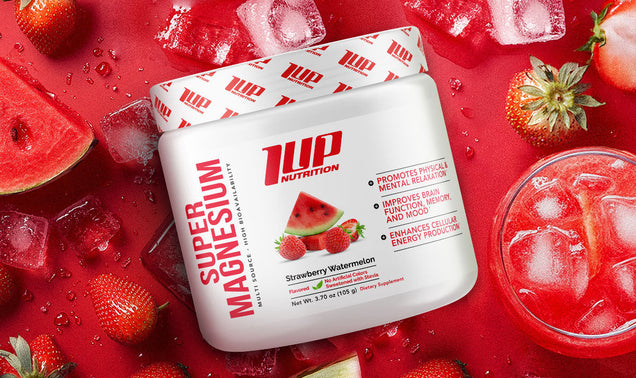Sure, lifting heavy and eating big will help you get results early in your fitness journey, but after some time, you’ll become more experienced and need to take a more refined, nuanced approach to training and nutrition.
That’s where this guide comes in.
Here, we’ve got 10 more tips to help you gain strength in the gym beyond simply lifting heavy and eating big.
Let’s get started!
Top 10 Tips to Help Boost Muscle Strength
Check Your Technique
Sheer will, grit, and determination can help you lift some pretty heavy weights, but at a certain point, your technique will start to factor into your ability to move heavy loads.
The best lifters (the kind that set records and win competitions) constantly assess and analyze their technique, typically using a combination of video recordings and 3rd parties (coaches, trainers, workout buddies, etc.).
Any inefficiencies in your kinetic chain will reduce your ability to produce maximal force, thereby limiting your absolute strength.
Shore up these inefficiencies and you’ll be on the road to increased strength gains again.
Improve Your Weak Links
The saying goes “a chain is only as strong as its weakest link” and this holds very true for the human body’s ability to move heavy loads.
Compound exercises rely on a number of major muscle groups as well as stabilizing and supporting muscle groups to move a weight. A weakness in any one of these (typically the supporting muscle groups) can limit your ability to lift heavy.
For example, the bench press uses your chest, shoulders, and triceps. Many individuals who struggle with lockout are weak in the triceps. By incorporating more triceps-intensive exercises in your workout (dips, close grip presses, pushdowns, etc.), you can improve your triceps strength and stamina, which will lead to greater performance in your bench press.
Dial In Nutrition
Training hard is only part of the muscle and strength building process. It needs to be supported with proper nutrition.
In other words, all the hard work in the gym won’t do much good if your diet isn’t buttoned up.
Proper nutrition supplies your mind and muscles with the essential nutrients it needs to perform at its best both in and out of the gym. Nutrition also plays a critical role in recovery, and how well you recover in between workouts has a profound effect on your ability to perform in the following workout.
Make sure to consume sufficient protein each day (~1 gram per pound of bodyweight) from high quality sources like lean meats or whey protein. Also, be sure to consume lots of fruits, vegetables, and whole grains as these supply your body with carbohydrates -- the primary fuel for intense physical activity. Finally, make sure to consume adequate dietary fat and water to support performance, recovery, and everyday functionality.
Microload
Typically, when individuals add weight to the bar, it comes in 5-10 lb increments, but after you’ve gained a considerable amount of strength, it’s not as easy to keep slapping on 5-10 pounds every week.
However, that doesn’t mean you can’t add any other weight to the bar.
That’s where microloading comes in.
Microloading plates won’t be found in most commercial gyms, but you can easily buy a set for yourself for as little as $30-40 online and store them in your gym bag.
Microloading plates allow you to increase the load by as little as 0.25lbs. If you’re at a point in your training where you can’t add 5lbs to a lift (such as on a lateral raise or curl), utilize microloading plates to continue to add weight to the bar and gain strength.
Train with Strong People
The mental component of lifting heavy isn’t emphasized nearly enough. By that, we mean that the average lifter is capable of lifting heavier weights for more reps than they actually do in their workouts.
A big part of this is that the human mind (for the average person) avoids pain and resists those things that make us uncomfortable. But, to gain strength, you have to be willing to push past your previous bests and sometimes tackle loads that make you a bit nervous.
That’s where having a training partner (or partners) who are stronger than you comes in handy.
Training with individuals who are stronger than you (mentally and/or physically) can help you rise to the challenge and break out of your comfort zone to attain new feats of strength.
If you’re already the strongest person in your gym, consider switching gyms or the times that you train or seek out individuals who are stronger than you and go train with them.
Do Volume Work
It’s commonly thought that low-rep training (1-5 reps per set) is only effective for building strength and higher rep training (6-15 reps per set) is only effective for building muscle.
But, that’s not entirely true. Sure, it might be most efficient to train in those rep ranges for those specific goals, but you can gain strength by lifting in higher rep ranges.
For instance, let’s say that your current program has you performing 3 sets of squats to start off leg day with a rep range of 8-10.
Your first week, your workout looks like this -- 10 / 9 / 8
Your second week looks like this -- 10 / 10 / 9
Your third week looks like this -- 11 / 10 / 10
Since you’ve reached the upper limit of your rep range on all three sets, you would add weight to the bar the following week so that you stay in your 8-10 rep range.
By definition you would have gained strength.
Even if your primary goal is to boost strength, don’t neglect the benefits (and importance) of volume work.
Prioritize Recovery
We’ve already touched on this point above, but its importance in helping you gain strength warrants discussing it again.
To gain strength, build muscle, and get results from your time spent in the gym, you mustprioritize your recovery.
Rest and recovery are what allow your body to repair itself and grow stronger so that you can create more overload (lift more weight for more reps) the following workout.
Key things to consider when it comes to prioritizing recovery are keeping stress in check, getting at least 7 hours of sleep, and using the right supplements, such as 1UP Men or Women Recovery Stack.
Additional ways to enhance recovery include foam rolling, mobility work, light yoga, and low-level physical activity during “off” days from training (such as a long walk).
Work on Breathing Technique
Taking a breath can be more complicated than you think, especially in the context of lifting weights.
When most people breathe, it’s shallow. They breathe into their chest all the while allowing their shoulders and traps to rise. Note that this is the wrong way to breathe.
When you breathe, make it a deep breath, by focusing on breathing down into your diaphragm and belly.
Deep breaths increase the amount of oxygen your mind and muscles get, which improves athletic performance and resistance to fatigue. Deep belly (“diaphragmatic”) breathing also stimulates the parasympathetic (“rest and digest”) nervous system which helps facilitate faster recovery in between sets during your training as well as after your session is complete.
Incorporate Power & Speed Work
As you become more advanced in your training, you will need to expand your training repertoire to continue to progress. This includes using more advanced training protocols like power and speed training as well as other intensification techniques like drop sets, paused reps, and failure training.
Additionally, incorporating Olympic lifts and their variations can help to develop more power and explosiveness which will pay dividends towards increasing your strength.
The caveat here is that these techniques are reserved for intermediate and advanced trainees. Novices should focus on becoming proficient on the basic compound movements and increasing their strength and volume work over time.
Focus on the Long-Term Journey
As much as we may want to see immediate progress from our hard work in the gym, we all need to take a step back and realize that results take time, especially when it comes to gaining strength and muscle.
Sure, in the early days of your training career you’ll be able to add 5-10 pounds to the bar each week, but after 6-12 months of steady training, you won’t be able to simply keep adding weight to the bar and hit your desired rep ranges.
That is completely normal and expected.
Remember, fitness is a journey, not a sprint. There will be ebbs and flows to your training. As such you might experience a slight decline in performance one week, but the next you’ll shatter PRs.
This is just part of a life in lifting, but so long as the long-term trend is moving up (i.e. lifting more weight for more reps), you’re on the right track. So, stay the course, work hard, eat right, and you will gain strength and get results!






